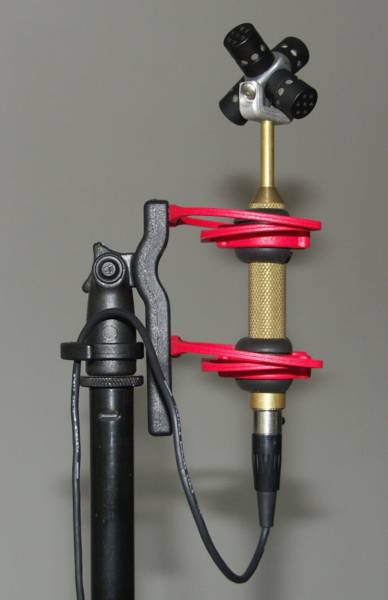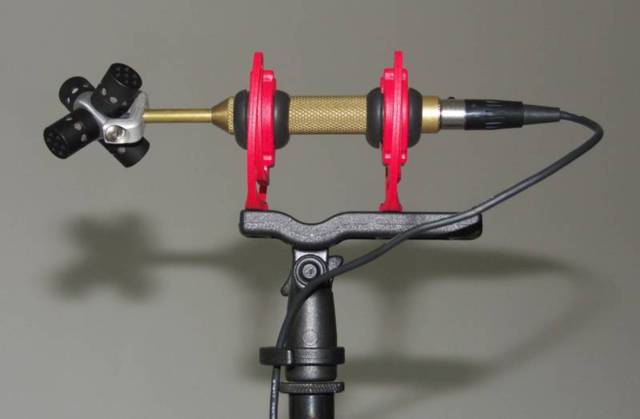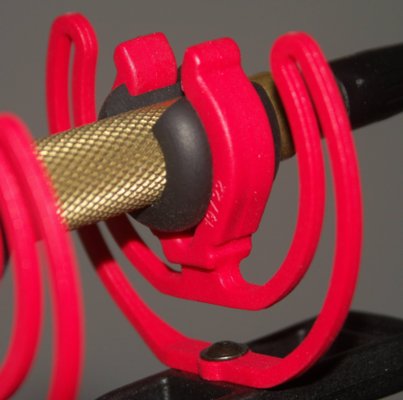Rycote Shockmount

Rycote INV-7 Shockmount
I have been feeling that the shockmount provided for the TetraMic is far too stiff (especially vertically) to be much use in some of my applications. I do not like having to cut low frequencies, in particular when recording an organ.
So recently I asked Simon Davies of Rycote, who are specialist manufacturers of windshields and shockmounts, whether he could find a way to use one of his recent InVision range of shockmounts with the TetraMic. He responded by sending me an InVision INV-7 mount with some alternative softer lyres (the name used for the suspension arms - because of their shape, I presume), and split grommets to take up the difference in diameter between the microphone body and the clips.
The result is shown in the photo. Whereas the standard lyres intended for rather heavier microphones are black, the alternative softer ones are this fetching bright red - which I rather like, but which I expect to produce complaints from a performer who likes my gear to be invisible!

The mount sags under the weight of the microphone by about 7mm, which promises isolation to quite a low frequency in the vertical plane. This is clearly shown in this photo taken from the side.
In the horizontal plane, the mount is a bit stiffer. Sideways movement (Y in ambisonic terms) is resonably free, but forward and back (X) is appreciably stiffer. The material of the mount seems to provide a good level of damping.
If the vibration in a particular situation is worst in the X direction, the mount can be tilted to hold the microphone horizontally instead. As we have facilities for specifying inverted head-on use of the microphone as standard, this creates no difficulties in processing the outputs.
The photo below shows the mount in this configuration.


The difference in size between the TetraMic's 13mm diameter and the 19mm or more catered for by the INV-7 lyre is taken up by a grommet which has been cut to go round the body of the mic.
This works once it is place, but because the rubber of the grommets doesn't slide, it requires quite a lot of force (applied with great care!) to get into place, and some ingenuity to get the microphone into position with the correct orientation, and with the grommets aligned in a sensible-looking manner.
Both the microphone and the lyres are delicate enough that I would suggest not taking them apart for storage, which creates some difficulties in transport, for instance. It might be that grommets of a hard shiny plastic can be found which could make the job easier - this is something that needs further thought and experiment, certainly.
My thanks go to Simon Davies of Rycote for providing this mount and thinking up a way to fit the TetraMic to it.

